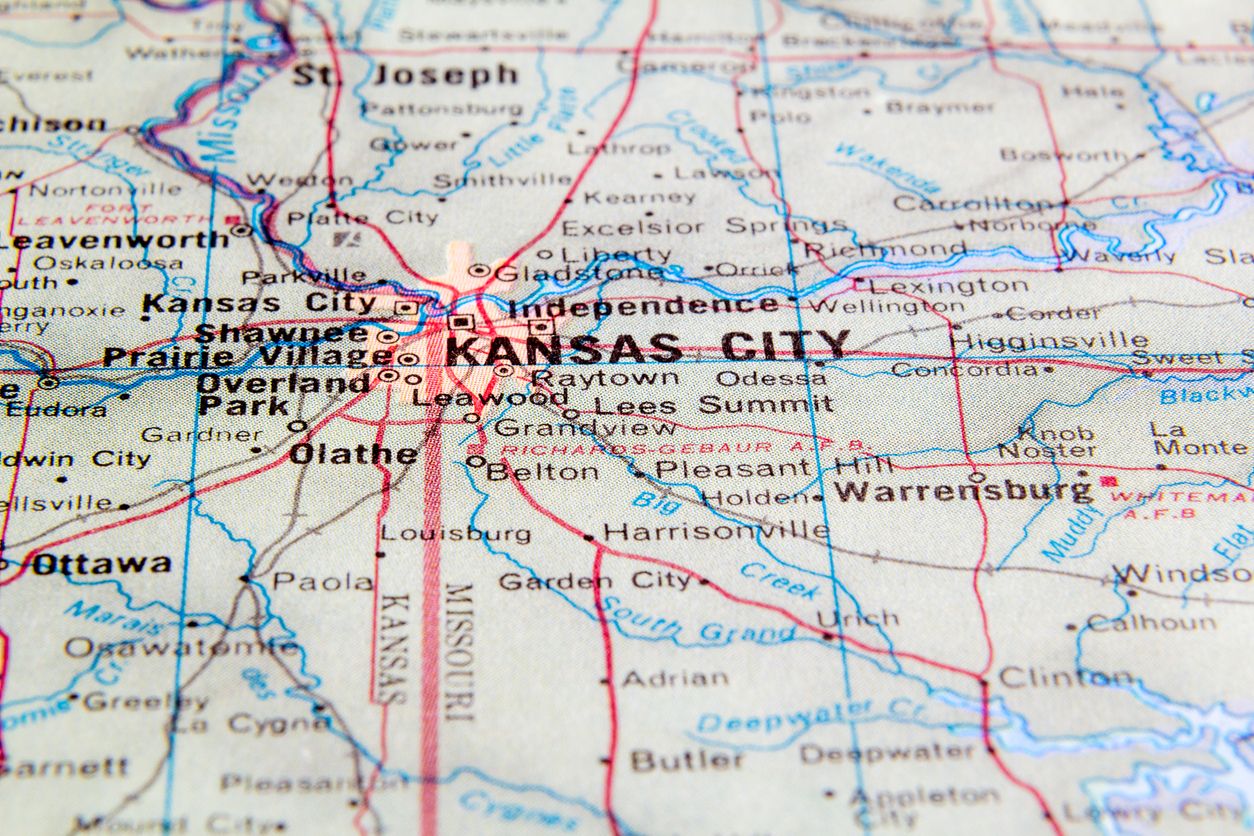Limited Time Offer: Get $100 Off Per Container
About Kansas City
While Kansas City is not located on a coast, it is a major inland port and intermodal freight hub that plays a critical role in U.S. shipping and logistics. Known as "America’s Heartland Port," Kansas City handles massive volumes of cargo moving across the country by rail, truck, and barge via the Missouri River. The Port of Kansas City (Woodswether Terminal) is part of the larger Kansas City Port Authority, which facilitates barge traffic on the Missouri River and connects to global trade via Gulf Coast ports like New Orleans.
The region's imports often include raw materials, consumer goods, machinery, and construction materials, much of which arrives by rail or barge from coastal ports. Exports from Kansas City typically consist of agricultural products (like soybeans and corn), manufactured goods, automotive parts, and chemicals. Many of these goods are produced in the Midwest and routed through Kansas City’s intermodal systems for international shipment via Gulf or West Coast ports.
Kansas City is one of the largest rail hubs in North America, served by five Class I railroads (BNSF, Union Pacific, Norfolk Southern, Kansas City Southern, and Canadian Pacific Kansas City). It also boasts extensive intermodal terminals operated by BNSF Logistics Park, UP’s Neff Yard, and SmartPort, a public-private partnership that promotes global trade. These facilities are heavily used by manufacturers, agribusinesses, logistics companies, and retailers such as Ford, General Motors, Hallmark, and Cargill, all of which depend on Kansas City for efficient multimodal transport.
The city also sits at the intersection of major interstate highways (I70, I35, I29), making it an ideal location for trucking operations and warehousing. This seamless integration of rail, road, and river makes Kansas City a powerful inland port in both domestic and international supply chains.
Population, Trade, and Industry Snapshot for Kansas City
Population
- Metropolitan Area: The Kansas City metropolitan area, encompassing counties in both Missouri and Kansas, boasts a population of approximately 2.2 million. This makes it the second-largest metropolitan area in Missouri. The population is projected to reach 2.5 million by 2050.
- City Proper: Kansas City, Missouri has a population of 512,360 in 2025.
Intermodal System
- Rail Hub: Kansas City is a major intermodal rail hub with several key facilities.
- Trucking Network
- Impact on Logistics: A well-developed intermodal system with multiple rail yards and a strong drayage network provides efficient movement of containers through the region.
Imports and Exports
- Exports: In 2023, Kansas's exports reached a record high of $14.08 billion, with the Kansas City metropolitan area contributing significantly at $10.6 billion.
- Major Export Categories: The top export categories for Kansas in 2023 included aircraft and parts, electric machinery, and pharmaceutical products, experiencing increases in export value.
- Foreign Trade Zone: Kansas City is home to the Greater Kansas City Foreign Trade Zone (GKCFTZ), which has seen substantial activity. In 2023, companies within the GKCFTZ received almost $2 billion in foreign and domestic goods and exported $618 million, according to the Kansas City Area Development Council. The GKCFTZ is ranked 2nd in the Midwest and 4th nationally for containerized imports.
Major Employers
- Seaboard Corporation, Burns & McDonnell, Dairy Farmers of America, Garmin International, Ford Kansas City Assembly Plant, and General Motors Fairfax Assembly Plant.
- The presence of a large number of companies involved in manufacturing, distribution, and particularly logistics, directly impacts the demand for container movement and storage, influencing container availability.

What We Love About Kansas City
Kansas City, straddling the border between Missouri and Kansas, is a vibrant and culturally rich city known for its unique blend of history, innovation, and community spirit. One of its most distinctive features is its reputation as the "City of Fountains," boasting over 200 fountains that grace its parks, boulevards, and public spaces, rivaled only by Rome. The city also has a deep connection to jazz music, with historic districts like 18th and Vine offering a peek into its golden age. Kansas City's jazz heritage is celebrated at the American Jazz Museum, where visitors can immerse themselves in the legacy of legends like Charlie Parker and Count Basie.
Another highlight of Kansas City is its world-famous barbecue, a culinary tradition that has made the city a mecca for food lovers. Kansas City-style barbecue is defined by its slow-smoked meats and tangy, tomato-based sauce, with iconic establishments like Joe’s Kansas City Bar-B-Que and Arthur Bryant’s drawing both locals and tourists. The city’s food scene extends beyond barbecue, showcasing an evolving dining culture that includes farm-to-table eateries, international cuisine, and craft breweries. The annual American Royal World Series of Barbecue further cements its place as a culinary destination.
Kansas City's charm lies in its thriving arts scene and welcoming community. The Crossroads Arts District is a hotspot for creativity, hosting galleries, studios, and the celebrated First Fridays event, where the streets come alive with art, music, and food. The city also boasts world-class attractions like the Nelson-Atkins Museum of Art, famous for its iconic shuttlecock sculptures, and Union Station, a beautifully restored architectural gem that serves as a cultural hub. Whether you're captivated by its rich history, delighted by its culinary offerings, or inspired by its artistic energy, Kansas City is a truly unique destination.

